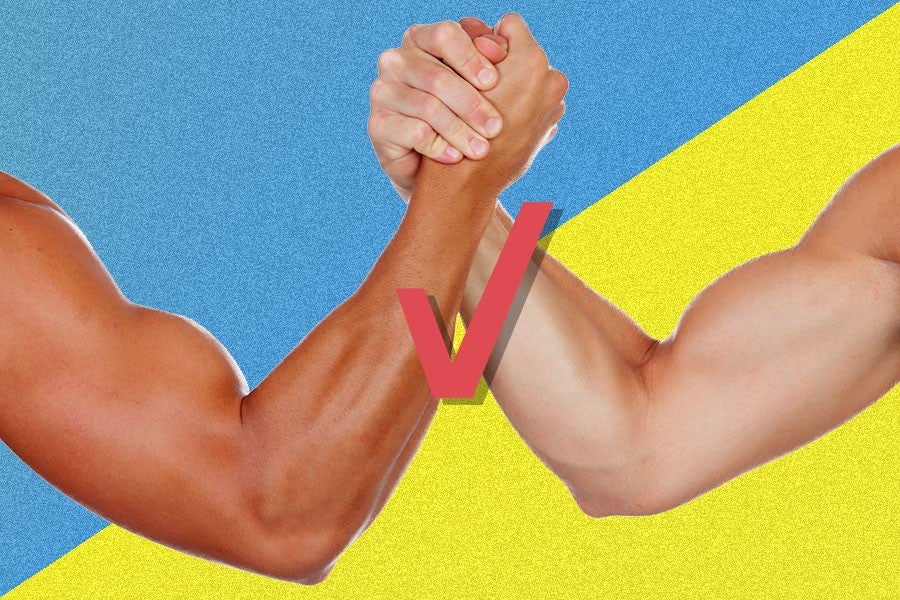According to new research from the University of Reading and the Federal University of Rio de Janeiro, hyper-masculine men — defined as those who exhibit traits such as competitiveness and aggressiveness — may be more likely to take part in pain research studies. Annoyingly, this could be skewing our understanding of the fact that women and men experience pain differently.
Researchers recruited 137 student volunteers to answer questions about their biological sex and gender identification and whether they were willing to participate in a pain study. The results revealed that there was a significant correlation between masculine traits and participation, with the study indicating that the more aggressive and competitive a man, the more likely he is to agree to participate in such a study.
We spoke to Tim Salomons, an associate professor in the School of Psychology at the University of Reading, to find out why this is the case — and what the ramifications might be.

What was the impetus for the study? Did you see a bunch of pain studies where the results were conspicuously skewed?
No! The impetus was people asking me, “Why would anyone sign up for a study where they know they’re going to receive pain?” That’s a good question!
How did you define what it means to be a “hyper-masculine” man?
It wasn’t really that we defined people as hyper-masculine, but simply how they defined themselves: Do they identify with typical, traditional male characteristics? So it wasn’t about some kind of objective measure of masculinity, but about self-identification, the type of values people identify with. The questionnaire we used defined masculinity in terms of very traditional “male” values, and in particular, aggressiveness and competitiveness were “masculine” traits that seemed to predict who would enter our studies.
So why do these guys sign up for pain studies more than anyone else?
The most likely explanation, based on previous studies, seems to be that they see this as an opportunity to test themselves and to show others how “manly” they are. Sort of like eating a really hot pepper, or skydiving.
Is there any sort of female equivalent of this behavior?
No. This effect was specific to men.
What does this mean for the results of these pain studies?
The main ramification, in my view, is that if men are entering studies because of some motivation to display their masculinity, they’re likely to also be motivated to show their ability to withstand pain, and might therefore be inclined to under-report pain. Previous research has shown that masculine gender identification is associated with lower pain ratings, which might support this interpretation.
Do you think that future studies will start to correct for this?
The first step is simply to quantify gender identification. This would tell us how consistently skewed our studies are — e.g., do all pain studies attract more “macho men?” Perhaps this is only in studies in university populations? Then, if need be, we can stratify our samples to make sure they accurately reflect the population.
How does this affect people receiving treatments based on such studies? Are there people out there experiencing unnecessary pain because a bunch of “macho men” skewed the results?
There are studies that suggest that physicians often believe women are over-reporting pain, and thus, they under-treat them. This study — and other related studies — suggest that since men might be motivated to under-report their pain, it may in fact be the men who aren’t reporting accurately.

